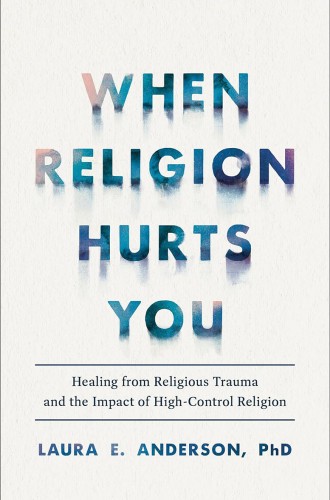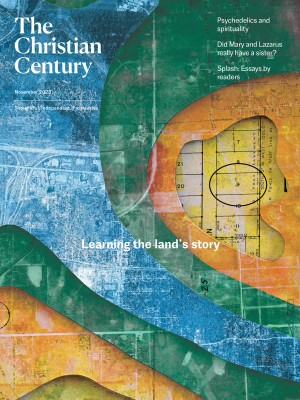Religion that harms
Drawing on both research and personal experience, therapist Laura Anderson explores the trauma caused by high-control religion.
“I don’t know if you’re truly saved because you all aren’t acting like you’re saved. I pray that the Lord will convict you of your rebellious spirits,” my science teacher said harshly. We all just rolled our eyes because this was the hundredth time this teacher said this to us, and it was only two months into eighth grade. “God put authorities in place over you for a reason, so disobeying us would be the same as disobeying God,” another teacher regularly reminded us. “Having sex before marriage is like giving your husband a chewed piece of gum on your wedding night, so you should sign this purity pledge to God,” said our girls’ group leader. It would take years to heal from the religious trauma these statements caused.
Therapist Laura Anderson defines religious trauma as the body’s response to overwhelming experiences that happen within religion, which she calls adverse religious experiences. Drawing on her research and her own personal experience, she discusses the mental and physical effects of religious trauma caused by high-control religion (which she refers to as HCR) and proposes ways to seek healing. She explains the neuroscience behind psychological concepts such as complex post-traumatic stress disorder in an understandable way without sacrificing depth or quality. This makes the discussion holistic in a way that helps readers with religious trauma better understand the physical and mental implications of their experiences.
Read our latest issue or browse back issues.
Something that may be surprising about high-control religion is the intensity and extent of authority its leaders impose on adherents. Anderson makes connections “between domestic violence and dynamics of power and control within HCRs,” highlighting the ways in which such groups isolate members from outsiders, meet the human need for connection, and create dependence on the religious community and leaders. Leaving these systems can be difficult because life outside them is unknown, but the people who do leave experience mental and physical symptoms similar to those of people who leave violent domestic relationships. It is especially complex to leave and heal from high-control religion because “much of what we now consider abusive and harmful behaviors were first learned as spiritual practices, hierarchies, and disciplines, which were seen within the religious system as essential for living a godly life.” What does it mean to accept and heal from the fact that the people who were supposed to love you and show you life-giving faith actually perpetuated harm that will take years to process?
When people go through an intense event or have similar experiences repeatedly, neural pathways are formed in the brain from both the event and the response to it. These well-worn pathways cause people to have similar reactions to similar events in the future.
For example, some religious traditions repeatedly tell people that their bodies are bad and that when your body sends you a message, you shouldn’t listen to it because the body is inherently untrustworthy. Consequently, neural pathways form in the brain, reiterating that bodies are bad and untrustworthy. Anderson writes, “One of the most effective ways an HCR can gain control over people is by creating a narrative around the body that promotes shame, sinfulness, and an external locus of control.” She draws attention to the ways that high-control religions teach people to be so out of tune with their bodies that they need to rely on other people or God to tell them how they are feeling and how they should feel. After leaving a high-control religion, it can take years to relearn how to trust what the body is communicating. If disembodiment is central to the success of high-control religion, embodiment—reconnection with the body and all that it tells us—is essential to healing from religious trauma.
Anderson’s goal is to help people rebuild “healthy relationships and connections” with themselves, and she notes that, along with embodiment, prioritizing and validating individual experiences is central to that work. Throughout the book, she reminds readers that the religious abuse they endured wasn’t their fault and that it shouldn’t have happened. Healing from religious trauma is not a linear experience, Anderson stresses, nor is it a destination. It is an ongoing process in which religious trauma survivors learn new, healthy ways to process and cope with the effects of trauma.
Anderson writes that it took her six years to find a therapist who acknowledged the existence of her own religious trauma and diagnosed her with CPTSD. Knowing that a mental health professional is researching and treating religious trauma in a holistic way will be revolutionary for many readers. Religious trauma is fairly common, and religious leaders especially should be aware of what it is and how it negatively affects people.
The centrality of individual experience in Anderson’s work naturally leads to storytelling. For me, one of the most compelling things about sharing experiences is how it makes people feel less alone. In almost every story Anderson told about her time in high-control religion, I found myself saying, “Yes! The same thing happened to me! I felt the same way!” I could relate deeply to every adverse religious experience she discusses, but I could also relate to her hope that life can be good and meaningful after experiencing religious trauma.







